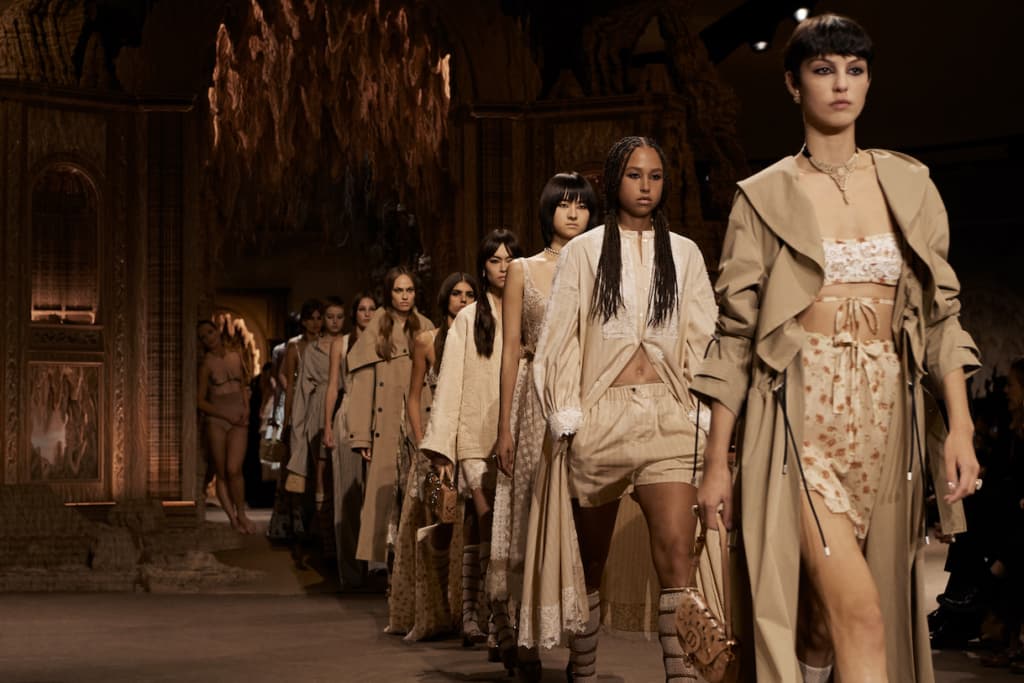The Baroque art style, renowned for its dramatic and ornate qualities, stands as a significant artistic movement that has profoundly influenced various forms of creative expression. This article delves into the defining characteristics that have rendered the Baroque style both special and memorable, exploring its impact on art, fashion, and architecture. The discussion will cover its historical emergence, key artistic elements, notable artists, and the style’s translation into fashion and architectural design.
Historical Context of Baroque Art
Originating in Europe in the 17th century and flourishing until the mid-18th century, the Baroque art style developed during a period marked by religious and political turmoil. This historical backdrop significantly influenced the style’s evolution, characterized by emotional depth and elaborate ornamentation. The Baroque movement arose partly as a response to these tumultuous times, with artists employing exaggerated forms, dynamic compositions, and dramatic lighting to convey intense emotional experiences.
Key Features of Baroque Art
Baroque art is distinguished by several defining features. The most notable is its use of chiaroscuro, a technique employing stark contrasts between light and dark areas to create drama and emotional intensity. This approach to lighting often involved highlighting subjects with a single light source, imparting a theatrical effect. Additionally, Baroque art is characterized by its ornate style, utilizing decorative elements to convey wealth, power, and grandeur. Movement and dynamism are also central to Baroque compositions, often achieved through diagonal lines and swirling forms to evoke energy and emotion.
Influential Baroque Artists
Several artists played pivotal roles in defining the Baroque style. Gian Lorenzo Bernini, renowned for his dynamic sculptures, Peter Paul Rubens, known for vibrant, large-scale works, Rembrandt van Rijn, a master of realistic portraiture, and Caravaggio, famous for his dramatic use of light and shadow, are among the most influential figures of this era. Their works epitomize the Baroque style’s dramatic, emotive, and ornate qualities.
Baroque Style in Fashion
The Baroque period also significantly influenced fashion, characterized by extravagance and a love for ornamentation. Key features of Baroque fashion include the use of rich fabrics like silk and velvet, embellished with elaborate details such as embroidery and jewels. High-waisted silhouettes, ruffles, frills, and the use of wigs were also prominent, reflecting the period’s opulence and extravagance.
Baroque Architecture and Interior Design
Baroque architecture is known for its grandeur and dramatic designs, with features such as curved walls, arches, domes, and ornate decorations. These elements combined to create a sense of movement and fluidity. Similarly, Baroque interior design emphasizes lavishness, with bold color schemes, exaggerated scale, and elaborate furniture, embodying the style’s grand and opulent essence.
Video Guide
In order to answer your questions in more detail, we have prepared a special video. Enjoy watching it!
Distinctive Aspects of Baroque Art
- Dramatic Use of Light: Mastery of chiaroscuro to create emotional depth and theatrical effects;
- Ornate Detailing: Use of intricate patterns and lavish motifs to convey opulence;
- Dynamic Movement: Incorporation of swirling forms and diagonal lines to evoke energy;
- Theatrical Composition: Creation of dramatic scenes that engage viewers emotionally;
- Emotional Intensity: Artwork that evokes strong feelings through expressive figures and settings.
Comparative Analysis Table: Baroque vs. Renaissance Art
| Aspect | Baroque Art | Renaissance Art |
|---|---|---|
| Lighting Technique | Chiaroscuro with stark contrasts | Balanced and harmonious lighting |
| Detailing | Ornate and elaborate | Detailed but restrained |
| Composition | Dynamic and dramatic | Balanced and symmetrical |
| Emotion | High emotional intensity | Subdued, idealized emotions |
| Movement | Evident and swirling | Calm and stable |
| Themes | Grandeur, power, drama | Humanism, symmetry, proportion |
| Color Palette | Rich and deep colors | Brighter, lighter colors |
Is Pinterest Good for Artists? – Integrating Baroque Art and Modern Social Media
In the digital age, platforms like Pinterest have become increasingly significant for artists, including those inspired by or working in styles like Baroque. This section explores the benefits of Pinterest for artists, particularly those drawn to the rich and dynamic qualities of Baroque art.
Benefits of Pinterest for Baroque-Inspired Artists:
- Visual Platform: Pinterest’s emphasis on visual content makes it ideal for showcasing the ornate and dramatic qualities of Baroque-inspired artwork;
- Audience Reach: With its vast user base, Pinterest provides a unique opportunity to reach art enthusiasts who appreciate the historical and aesthetic aspects of Baroque art;
- Portfolio Showcase: Artists can create digital portfolios on Pinterest, displaying their works influenced by Baroque characteristics like chiaroscuro, dynamism, and ornate details;
- Inspiration Source: Pinterest acts as a repository of Baroque art, offering a wealth of images for inspiration and study, helping artists refine their style and technique.
Leveraging Pinterest for Baroque Style Artworks:
- Curating Themed Boards: Artists can curate Pinterest boards dedicated to different elements of the Baroque style, such as light and shadow techniques, historical contexts, or modern interpretations;
- Networking and Collaboration: Pinterest allows artists to connect with other enthusiasts of Baroque art, opening avenues for collaboration and community engagement;
- Educational Content: Artists can share insights about the Baroque style, techniques, and history, positioning themselves as knowledgeable sources in this art genre.
Incorporating Pinterest into an artist’s digital strategy, especially those inspired by the Baroque style, can enhance their visibility, provide rich sources of inspiration, and enable them to connect with a broader audience who shares their passion for this opulent and expressive art form.
Conclusion
The Baroque art style, with its emphasis on emotion, dramatic lighting, and ornate qualities, emerged as a response to the socio-political challenges of the 17th century. Its influence extends beyond art, permeating fashion, and architecture, and continues to inspire contemporary artists and designers. The Baroque style remains a testament to the era’s rich cultural heritage and artistic innovation.
